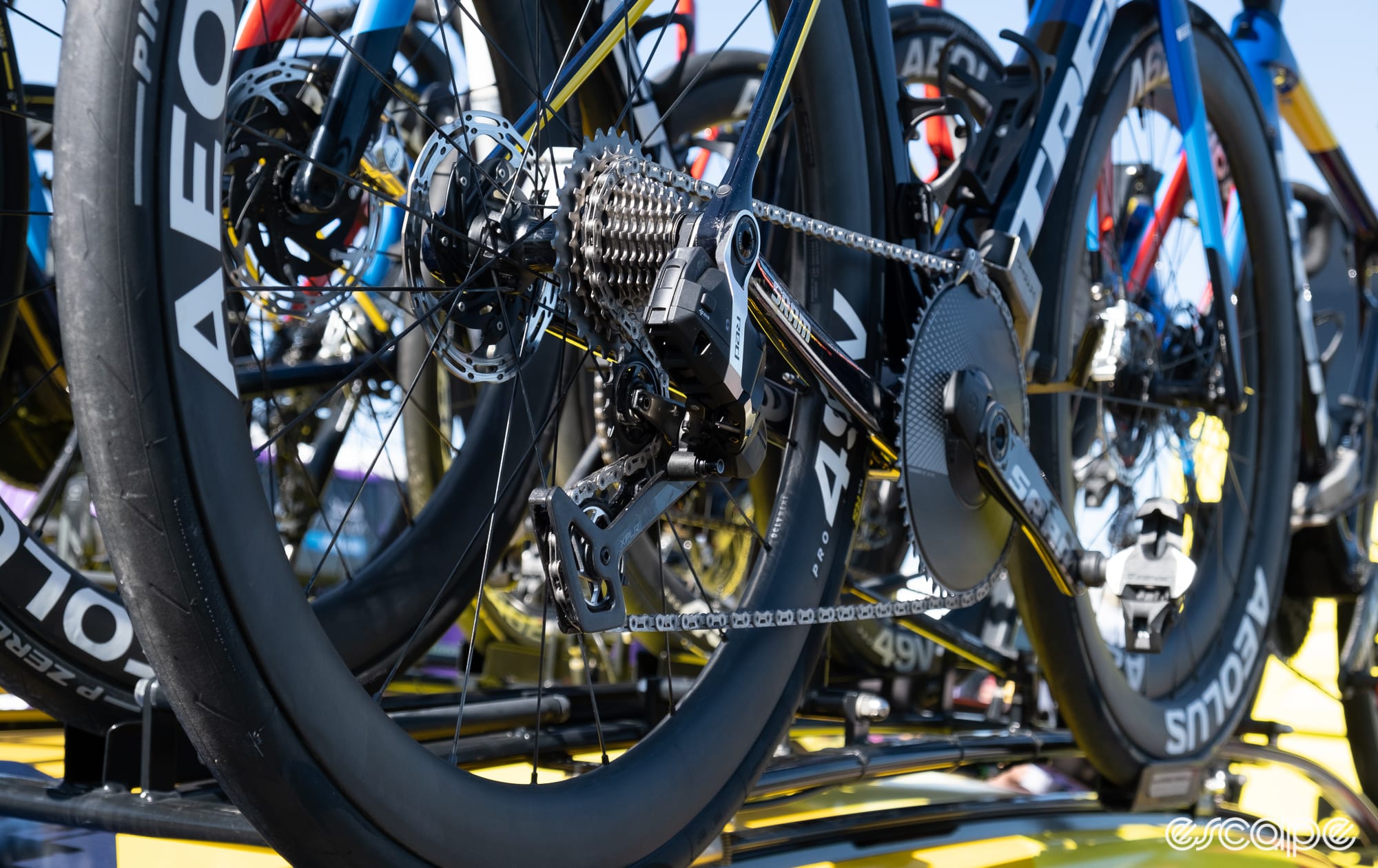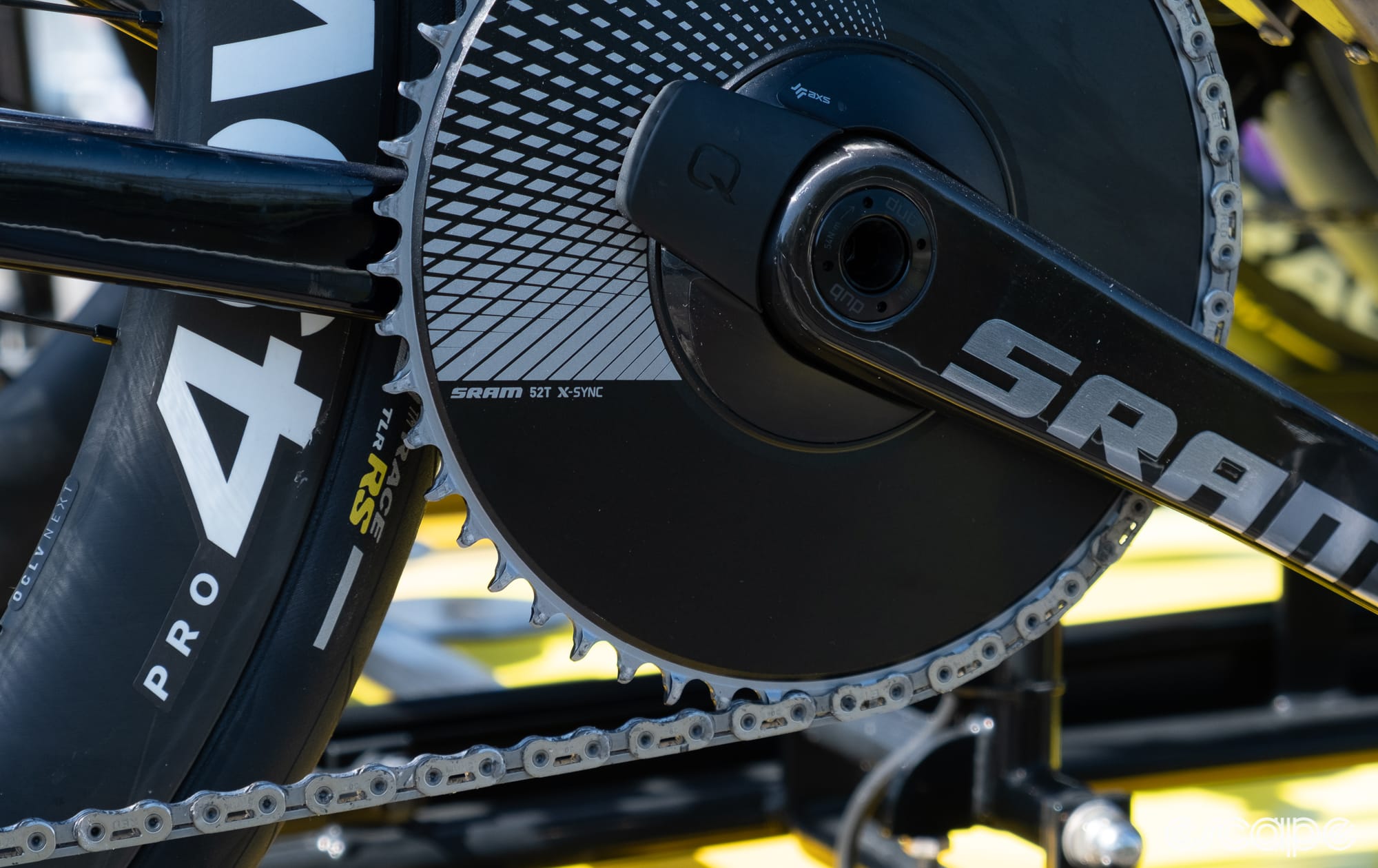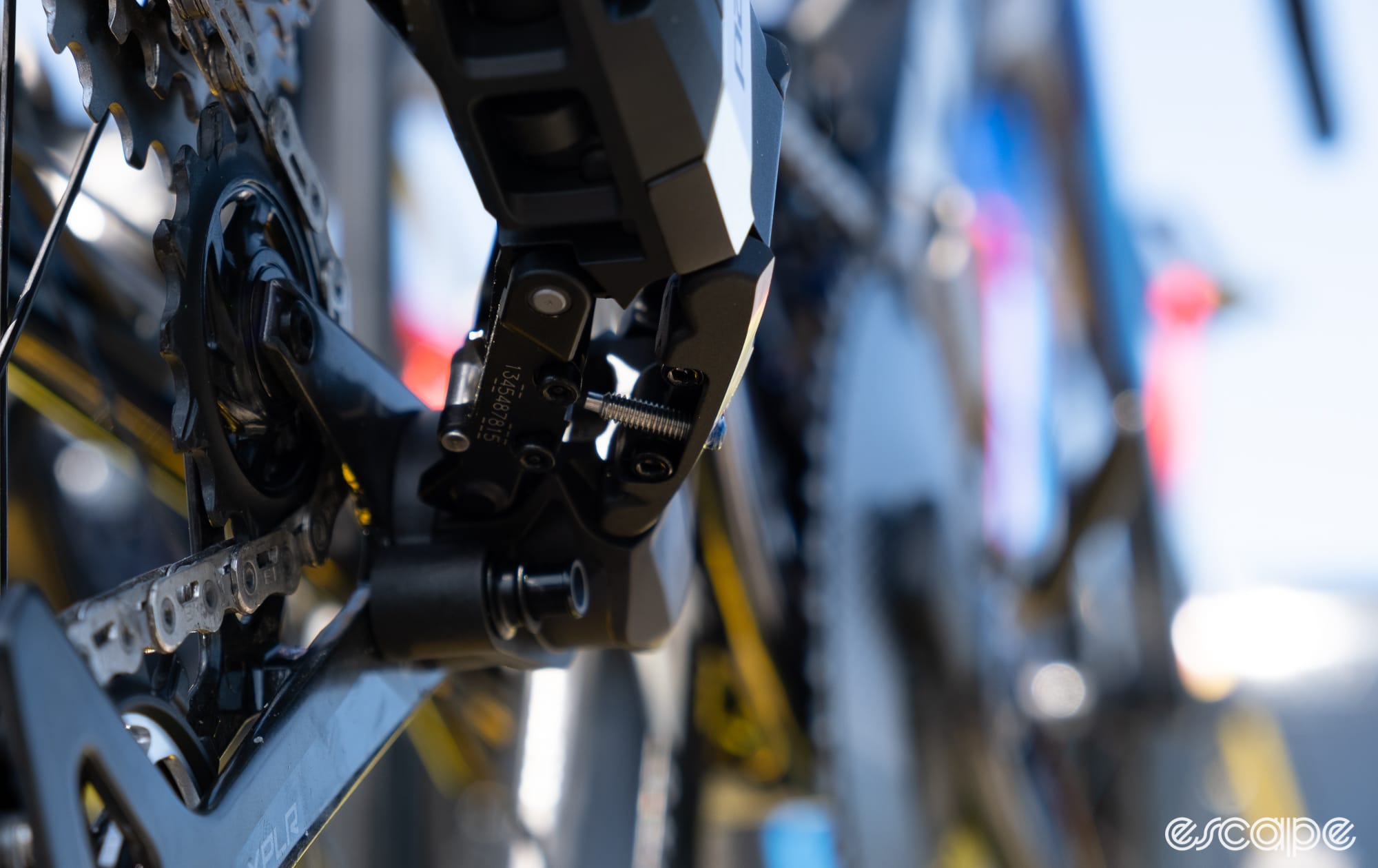Paris-Roubaix isn’t the tech playground it used to be. As speeds rise, tyre widths grow, and teams’ regular race bikes become increasingly versatile, the golden era of suspension hacks and one-off frames feels firmly in the rearview. That said, there are still Roubaix-specific hacks out there - if you know where to look.
Outside the Lidl-Trek team bus was the place to look at the start of the Paris-Roubaix Femmes avec Zwift start village in Denain. The team has been using the new-ish SRAM Red XPLR 13 speed 1X groupset throughout the classics season, and while that’s mostly the case at Roubaix again, there’s one significant change. The team is using a previous-generation SRAM Red 12-speed 10-28 road cassette with the 13 speed gravel rear derailleur, a combination that, at least according to SRAM, is not compatible.

As covered by Escape Collective earlier this spring, Lidl-Trek has been using the SRAM Red XPLR 1X setup not primarily for marginal gains, but for reliability, a key priority on the cobbles of the spring classics. The wide-range, 13-speed, 10-46 cassette offers enough range along with the 54T chainring the men’s team has typically used, while the 1X drivetrain eliminates the risk of front shifting errors and reduces the risk of dropped chains in crucial moments approaching cobbled climbs of the Flemish Ardennes.

The narrow-wide chainring, clutch-equipped derailleur, and chain guide all enhance chain retention, especially over cobbles and under high-torque efforts. Plus, the UDH-style full-mount derailleur improves crash resilience by removing the vulnerable hanger, which could prove key in getting riders moving again quickly after a crash. In essence, the setup is about simplicity, durability, and mechanical security rather than chasing small efficiency or aerodynamic gains that may come with the larger chainring and 1X and ditching a front derailleur.
Did we do a good job with this story?




